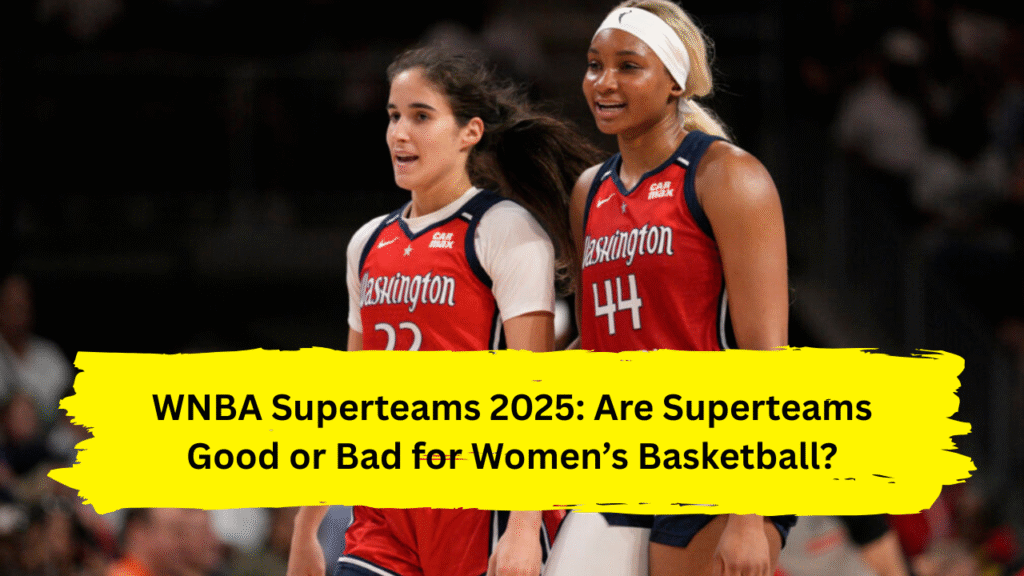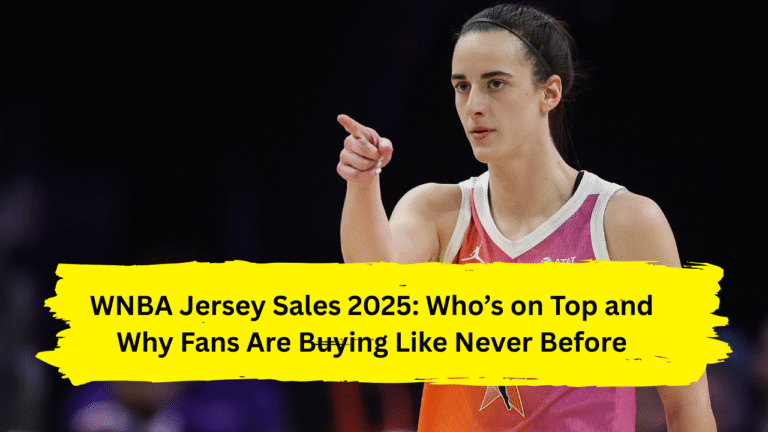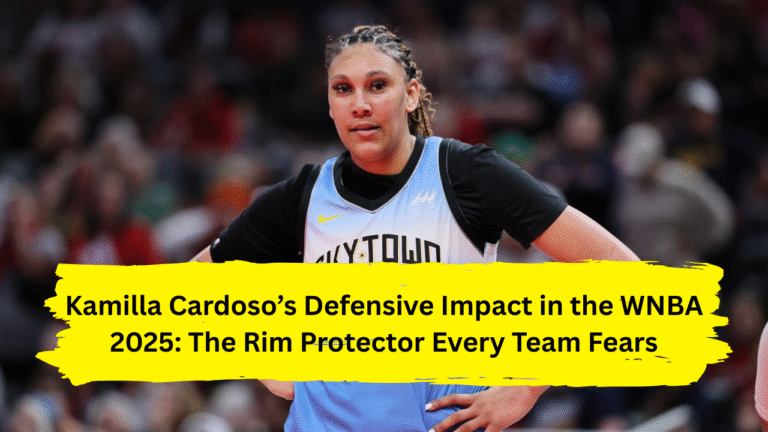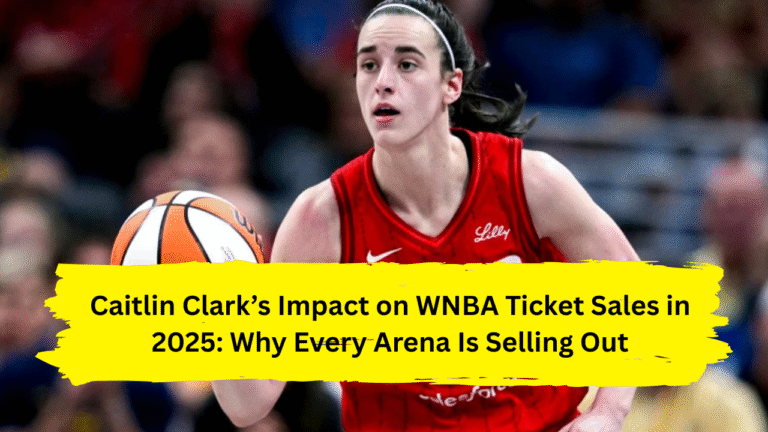
WNBA superteams in 2025 are dominating headlines. Are they growing the league or hurting competition? Dive into the debate, stats, and fan reactions.
The rise of WNBA superteams in 2025 has become one of the most polarizing and talked-about topics in the league. With the Las Vegas Aces and New York Liberty loading up on All-Stars—and new contenders forming with players like Caitlin Clark and Angel Reese entering the league—fans and analysts alike are asking: Is this the best thing to ever happen to women’s basketball… or the beginning of a competitive imbalance?
Let’s break it all down—the rosters, the reactions, and what it means for the future of the WNBA.
What Is a WNBA Superteam? And Why Now?
A superteam is a roster stacked with multiple All-Stars, MVPs, or elite-level talent—think NBA’s Golden State Warriors circa 2017.
In 2025, the WNBA has seen a clear rise in superteam formations, thanks to:
- Player movement via free agency
- Increased visibility and endorsements
- Star rookies raising team profiles overnight
- Owners investing more in talent, branding, and facilities
And honestly? The league feels bigger because of it.
Top WNBA Superteams in 2025
| Team | Key Players | 2025 Record (as of July) |
|---|---|---|
| Las Vegas Aces | A’ja Wilson, Kelsey Plum, Chelsea Gray, Candace Parker | 19-4 |
| New York Liberty | Breanna Stewart, Sabrina Ionescu, Jonquel Jones | 17-6 |
| Indiana Fever | Caitlin Clark, Aliyah Boston, NaLyssa Smith | 14-8 |
| Chicago Sky | Angel Reese, Marina Mabrey, Elizabeth Williams | 12-10 |
Notice something? Superteams = top standings. But is it fair?
The Aces and Liberty: Superteam Blueprints
The Las Vegas Aces have set the modern standard for a WNBA dynasty. A’ja Wilson is putting up MVP numbers again (22.5 PPG, 9.4 RPG), and the team chemistry is off the charts.
Meanwhile, the New York Liberty remain a juggernaut with a deep bench and lights-out shooting. Breanna Stewart leads the team in both points and PER, while Sabrina Ionescu is breaking three-point records.
Both teams were built through smart trades and aggressive free-agent moves, which is rare in the WNBA’s traditionally slower-moving ecosystem.
Caitlin Clark’s Fever Are Superteam Material?
Okay, let’s be real: The Fever aren’t there yet, but they’re getting close. Caitlin Clark is averaging 20.8 PPG and 7.1 assists per game, and her presence alone has transformed Indiana into a contender.
Pair her with 2023 Rookie of the Year Aliyah Boston, and you’ve got the foundation of the next WNBA superteam—especially with the Fever rumored to be targeting a big-name free agent next offseason.
Are Superteams Hurting Competition? The Critics Speak Out
Not everyone is thrilled with this trend. Some fans and analysts believe:
- Games are becoming too predictable
- Small-market teams can’t compete for top talent
- Star players are “teaming up” instead of spreading out the league’s parity
One viral tweet said:
“It’s the Aces vs. Liberty every Finals. Why should I even watch the regular season?”
Even ESPN’s Monica McNutt weighed in during a July broadcast, saying:
“The league needs stars everywhere, not just in two cities.”
But Here’s Why Superteams Might Be Good for the WNBA
While it’s easy to bash the concept, there are major upsides:
- Viewership is soaring for Aces, Liberty, and Fever games
- Ticket sales and attendance are up league-wide
- It creates storylines, rivalries, and drama—the fuel of any successful sports league
- More superteams = more national coverage and brand investment
The 2025 season opener between the Aces and Liberty pulled over 2.9 million viewers, making it the most-watched WNBA regular season game ever, per NBC Sports.
Endorsements and Marketability: The Superteam Boost
Players on superteams are benefiting off the court too:
- A’ja Wilson: Nike, AT&T, Puma
- Caitlin Clark: Gatorade, Panini, State Farm
- Angel Reese: Amazon, Reebok, Raising Cane’s
- Breanna Stewart: Adidas, CarMax
The visibility helps grow not just individual players but the league as a whole.
What Do Fans Think? It’s Complicated.
Here’s a snapshot of online sentiment:
- Pro-Superteam Fans: “Give me big games and drama. I want stars going at it.”
- Anti-Superteam Fans: “What happened to competitive balance? Every game feels lopsided.”
And yet… ratings don’t lie. The most popular games are always the ones featuring these stacked squads.
The League’s Response: Can the WNBA Manage the Superteam Era?
Commissioner Cathy Engelbert has addressed the trend. At the All-Star break, she said:
“We want a competitive league, but we also love the spotlight our stars are getting. It’s about balance.”
She hinted at potential tweaks in the next CBA, such as:
- Adjusting the salary cap
- Revisiting player movement rules
- Creating incentives for players to stay with small-market teams
The Bottom Line: Superteams Are Here—and They’re Changing the Game
The truth? WNBA superteams in 2025 are energizing the league. While some fear an imbalance, there’s no doubt these powerhouse rosters are driving interest, revenue, and excitement in women’s basketball like never before.
Will it last? Only time will tell. But right now, it’s clear: superteams are the story of the season.
What’s your take on WNBA superteams—love ‘em or hate ‘em? Sound off in the comments, share this article, and don’t forget to subscribe for more WNBA news and updates!
Also Read: Latest Trending News




